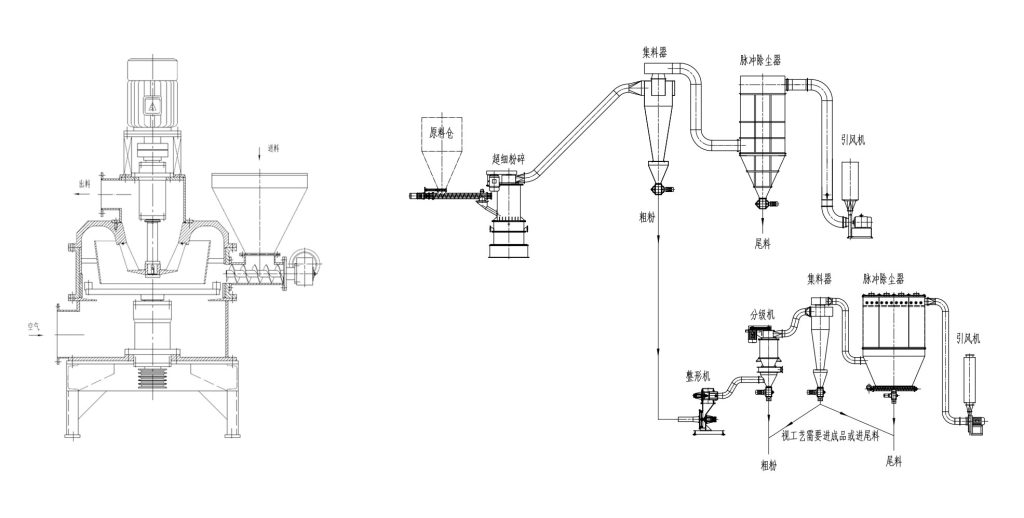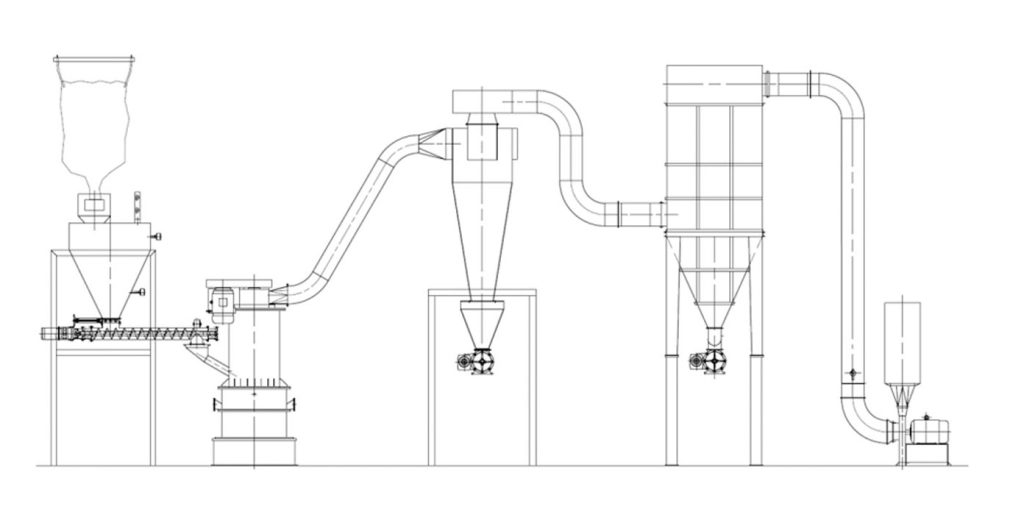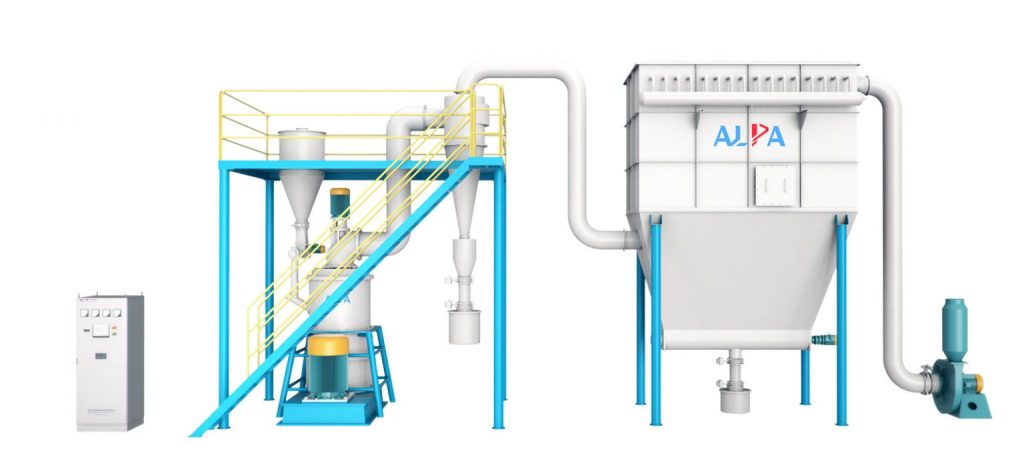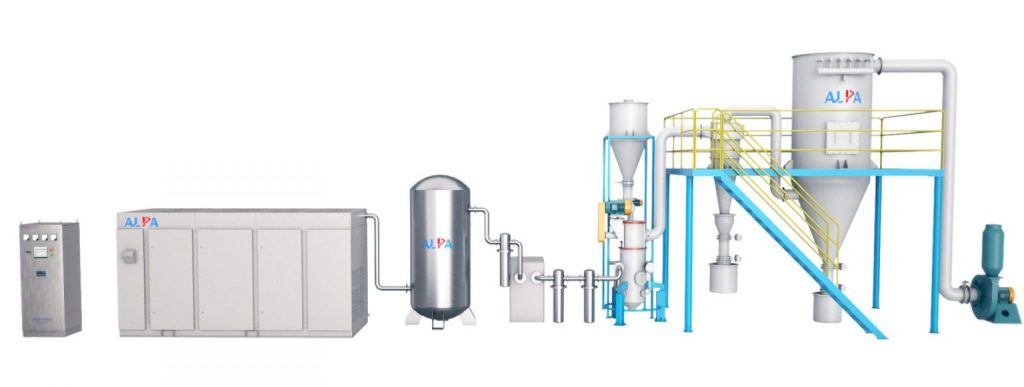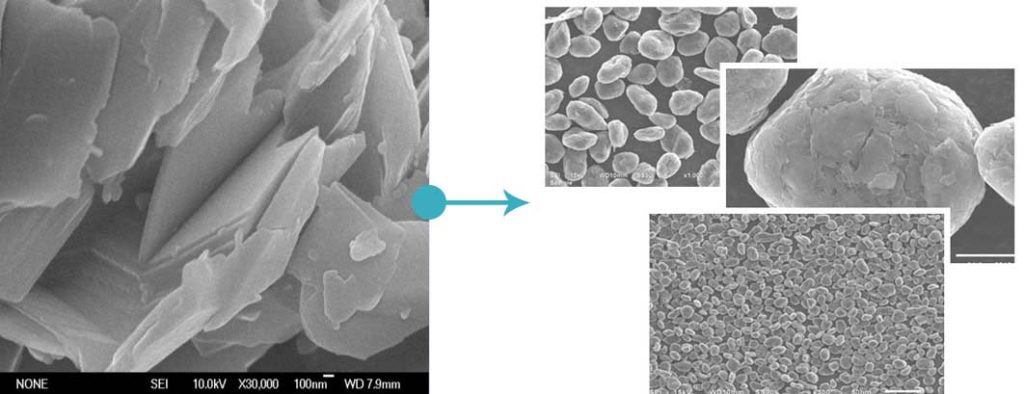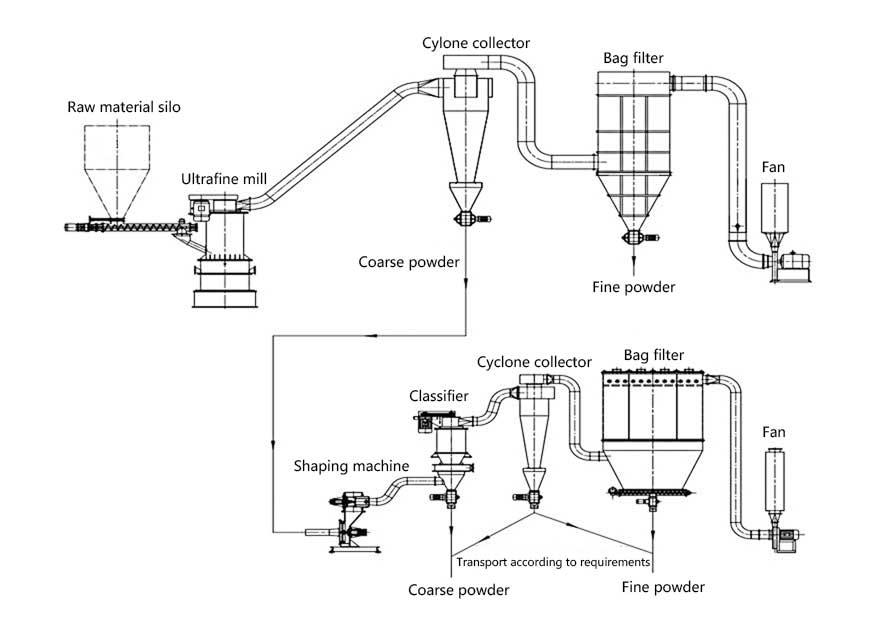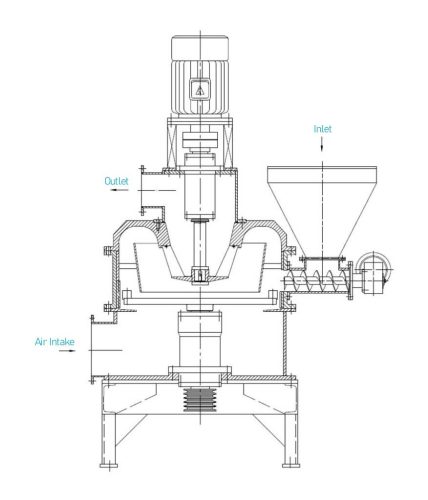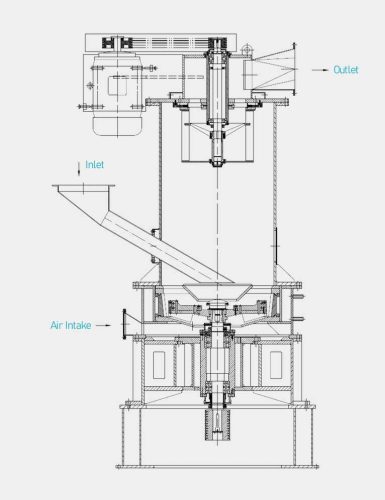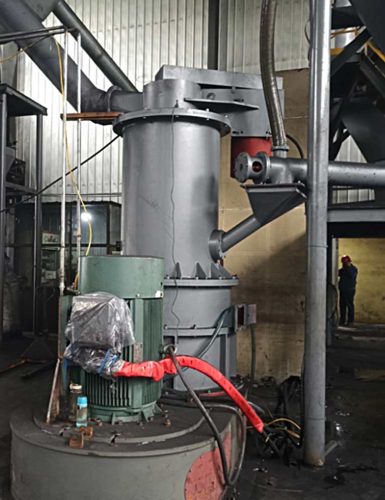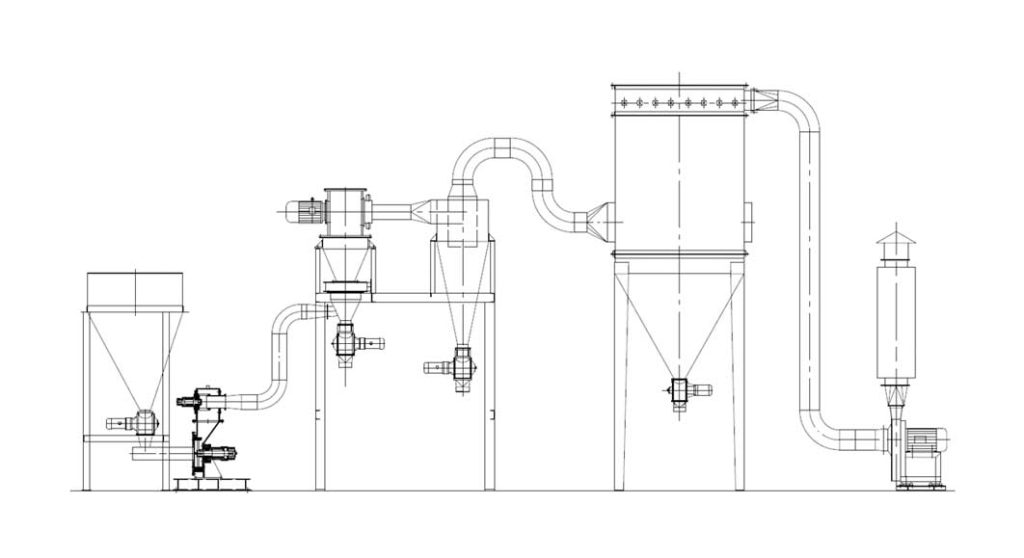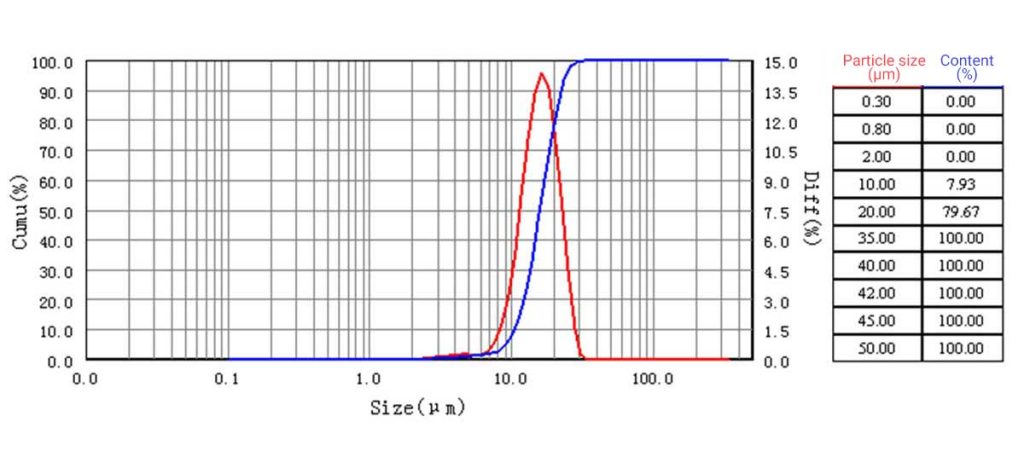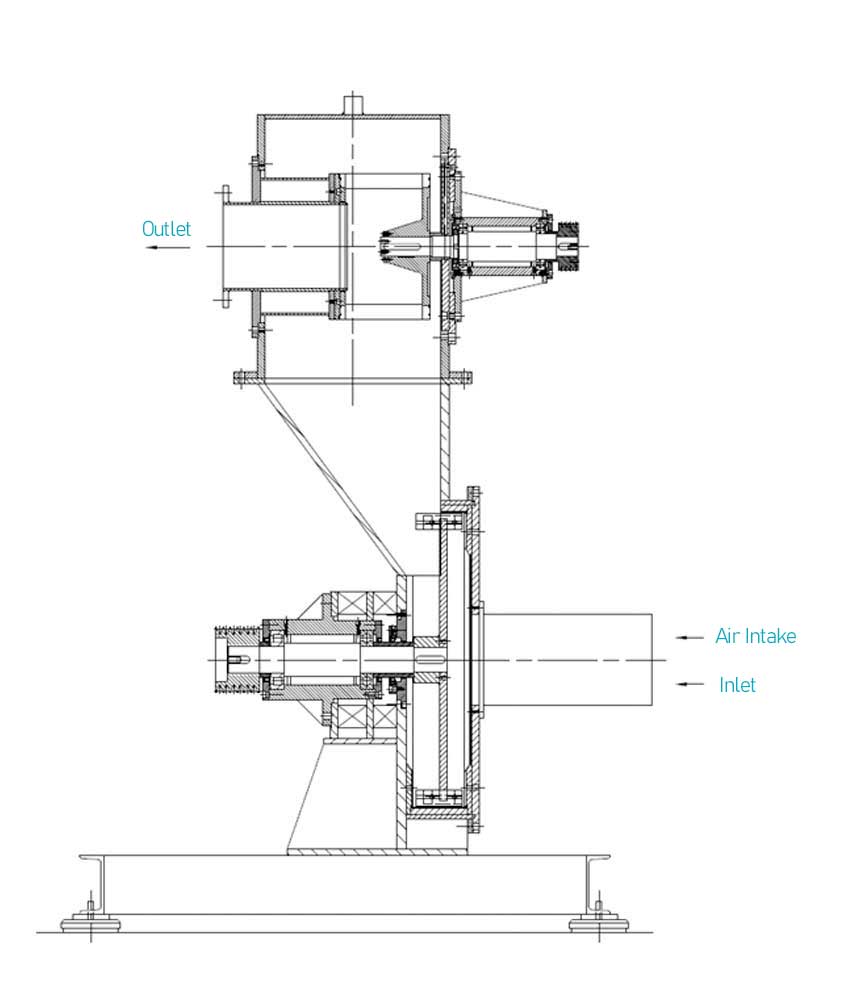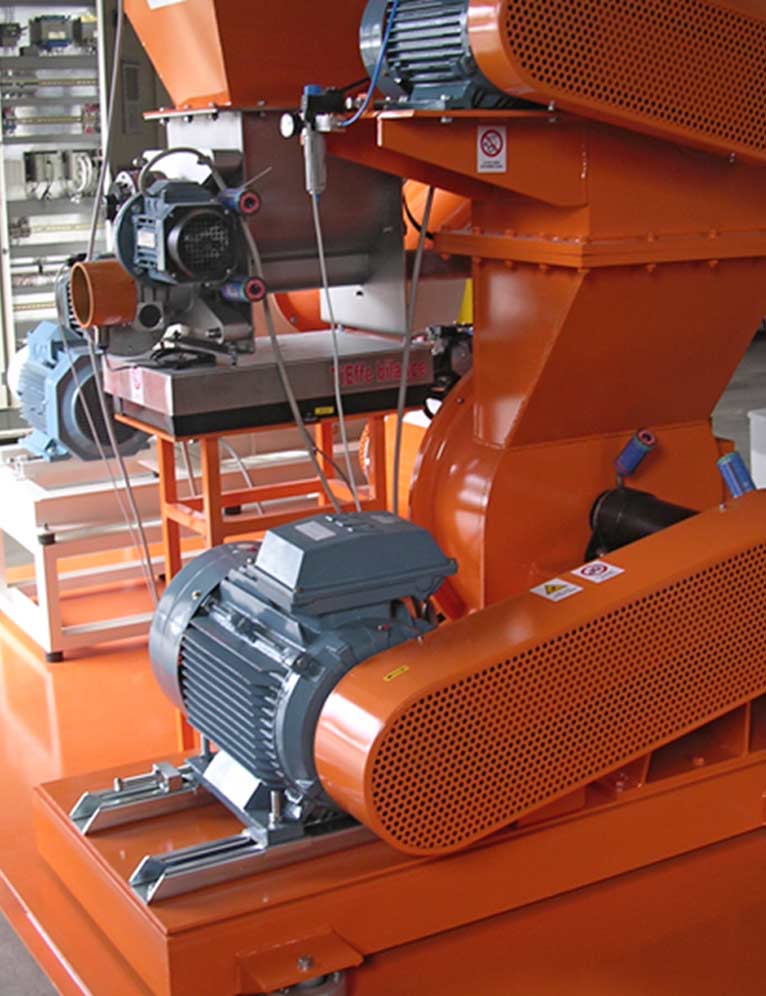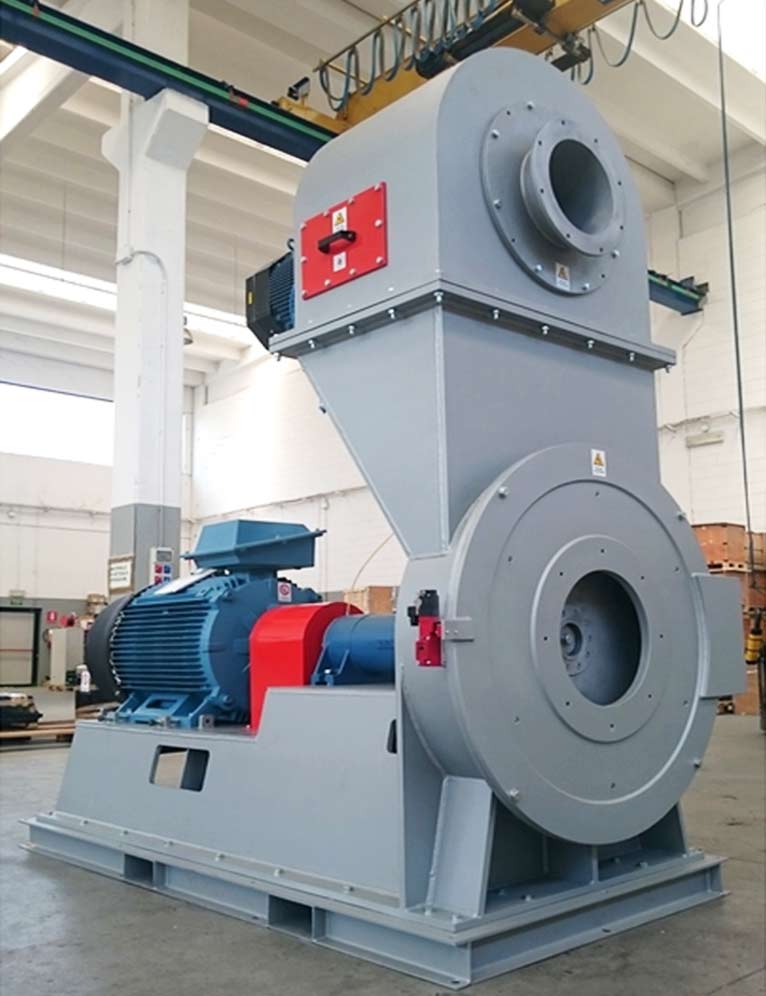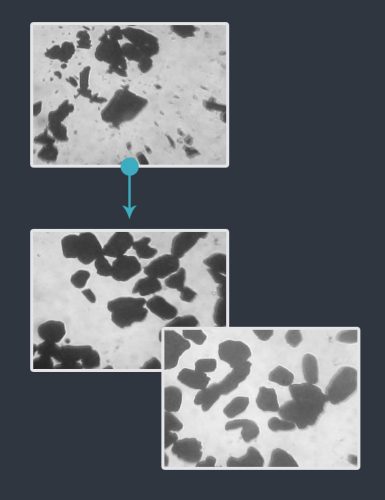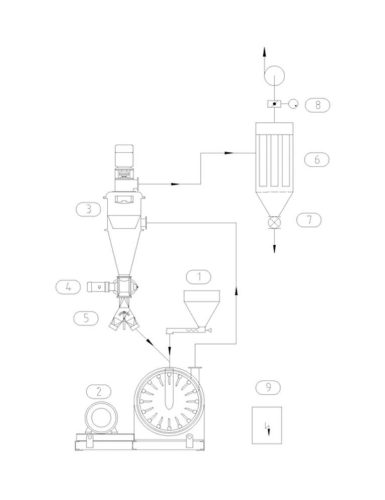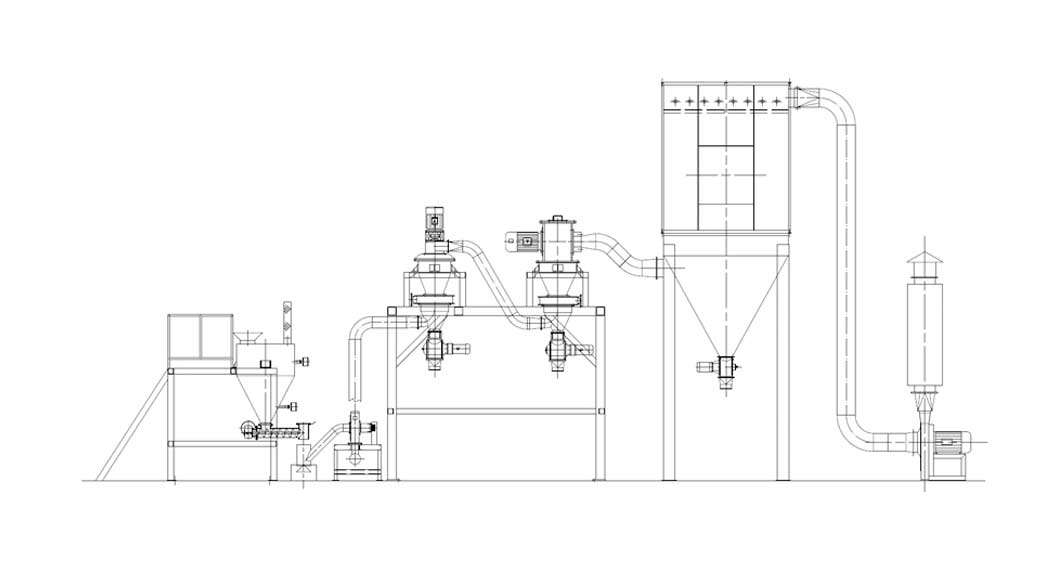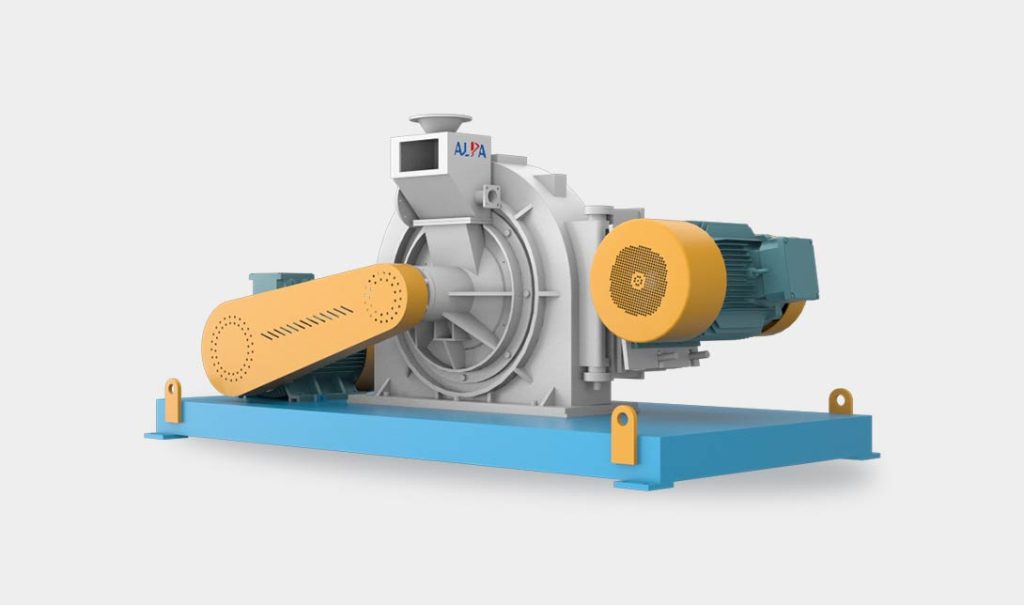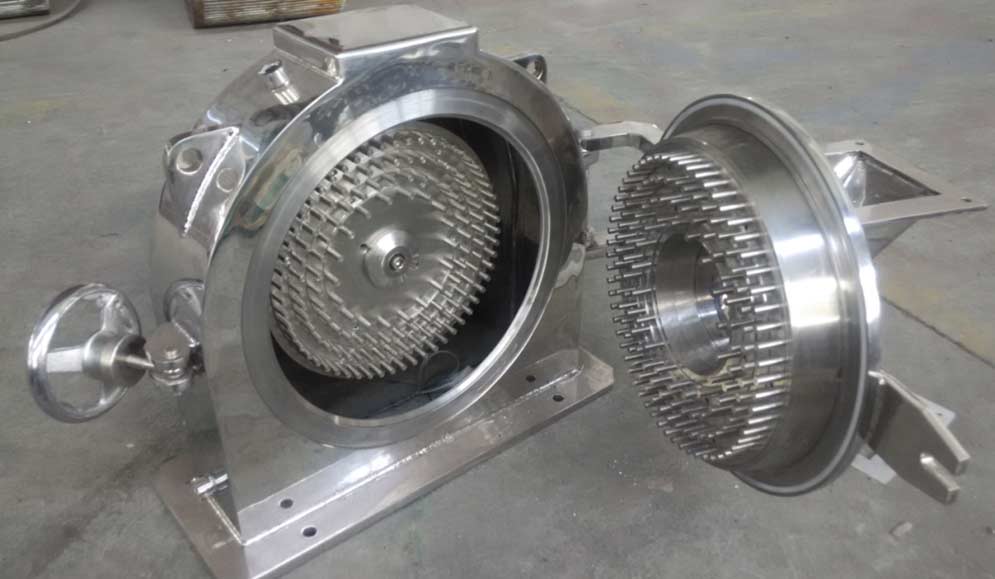
Carbon material is currently the main negative electrode material used in lithium-ion batteries, include graphite, needle coke, petroleum coke, graphene, etc.Its performance affects the quality, cost and safety of lithium-ion batteries.The factors that determine the performance of anode materials are not only the raw materials and the process formula, but also the stable and energy-efficient carbon graphite grinding, spheroidizing, shaping and grading technologies.
To follow the trend of negative electrode, we developed CUM Impact Mill and designed a process to realize the surface fixing with mechanical force. This system is designed to improve the shaping efficiency and performance, and meet the requirement of surface coating. CUM Impact Mills are mainly used for shaping of artificial graphite and natural graphite, grinded by CSM Air Classifier Mill. The surface of the particle is fixed under the long time, low speed mechanical force. The surface area is decreased considerably but the particle size changes slightly. This brings higher product output, narrow particle size distribution and better coating performance.






